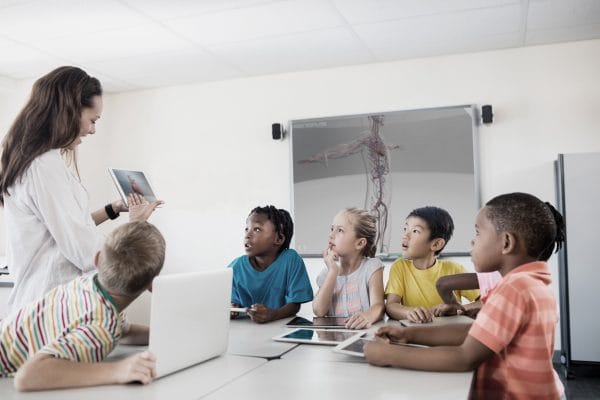Teach

”The more visual the input becomes, the more likely it is to be recognized and recalled.”
About half of our brain’s processing power is dedicated to seeing and processing visual sense, as much as 75-90% of learning in a classroom occurs through the visual system. Our vision is key to interacting with the world around us, and trumps all other senses when it comes to learning. Numerous experiments show that pictures and images are more likely to be remembered than words, commonly referred to as the picture superiority effect, PSE.
Dr John Medina, neuroscientist and the author of Brain Rules
Reduce cognitive load
In science, students need to understand abstract concepts that can be as difficult to teach as to learn. By using relevant, realistic representations, the student can get a better understanding, and the teacher can also help reduce the extraneous cognitive load through creating content that is void of irrelevant material for the specific group that is taught. and pausing the instruction at certain points where key concepts are explained at depth.
HOW TO TEACH WITH SENSAVIS
Using a visual learning tool like Sensavis in the classroom, the teacher can to reach and include all students in the learning by visualizing the abstract and complex, capturing the student’s interest and focus. The interactivity and ability to dwell deeper into a subject and explore together increases the interaction and engagement.
This software is completely in the hands of the educator. It is flexible, and allows the teacher to use the specific terminology, level and pace which is suitable for each student group. It is up to each teacher how to best utilize it in class.
Learn from peers

“The 3D visualizations will not only make the lessons more interesting, they will help engage the students since they will be able to understand complex concepts and remember what they learn for longer.”
Thoha Saleem, principal, Ghiyasuddin International School, Maldives
“Using Sensavis’ content will empower our teachers to provide engaging digital content to help every student reach their full potential by personalizing learning environments to meet different learning needs. Sensavis will assist us in teaching STEM concepts that lay a foundation for students that are college and career ready.”
Kim Clemmons, Supervisor of Instructional Technology at Wilson County Schools, US
“We use state-of-the-art teaching tools like Sensavis to enhance students’ abilities to visualize and conceptualize science content. I need some sort of image in every lecture I have, whether I have a model, sketch something on the board or show it on a screen. My goal is to use this imagery to help students visualize concepts I’m teaching, and my hope is that it makes concepts more interesting to students.”
Dr. Anna Norris, Biology Professor, Southwestern Michigan College, US

“I see big advantages in working with Sensavis in preschool since the children can get access to information in a way that is difficult to convey in words. We have many children with another mother tongue than Swedish. This learning environment is simulating and motivating when it comes to language, and can help the children see context and enhance their understanding of what they are learning. The complex can be made easier to understand and we can adapt the lessons to individual or group needs.”
Birgitta Andrén, preschool director, Upplands Väsby Municipality, Sweden